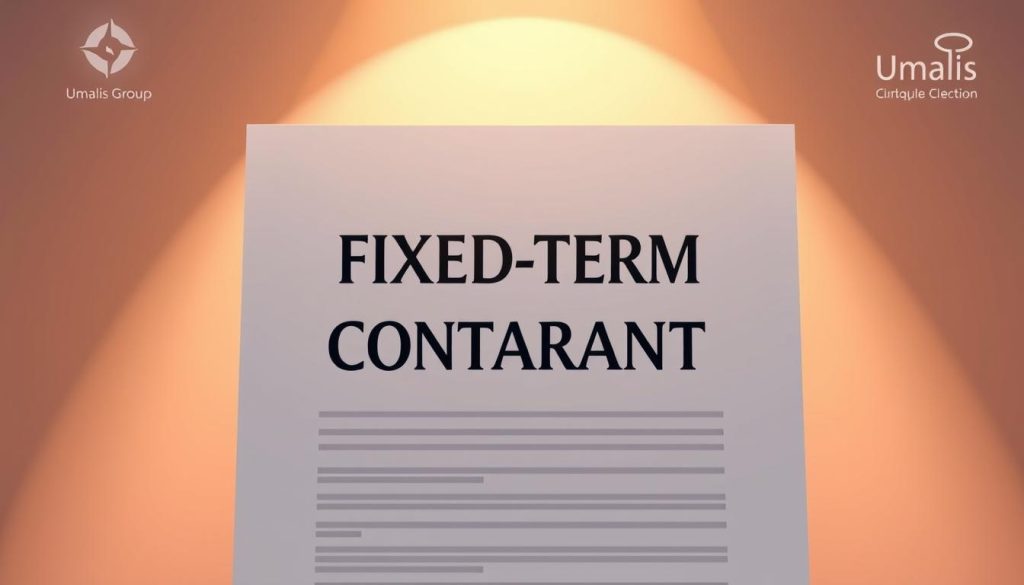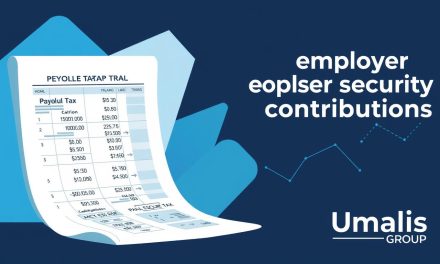Did you know that in France the permanent contract (CDI) is the default and fixed-term options (CDD) are tightly limited by law?
We map the landscape so you can choose the right agreement for your project with confidence. France allows CDIs, CDDs, interim hires, apprenticeships and special forms for seasonal or site-based missions.
Our aim is practical: explain when a CDI should apply and when a CDD is justified under Article L.1242-2. We focus on duration, renewals, and how an end date ties to the original reason.
For independent people, we outline how to present your profile to a company and compare offers across sectors. For businesses, we show how to limit risk while staying agile.
Table of Contents
Key Takeaways
- CDI is the norm in France; CDDs are for specific, limited cases.
- Duration and renewal rules shape project plans and pay.
- End dates must match the reason a CDD was used.
- Independent pros should position skills to fit company needs.
- Businesses must balance compliance with operational flexibility.
Understanding contract work today
Short-term, task-focused agreements help businesses access skills fast while limiting long-term commitments. These arrangements are defined by a clear scope, a set duration, and agreed deliverables.
Definition, scope, and market fit
In France, these formats sit alongside CDI and CDD options. They range from single-project missions to seasonal posts, interim placements and rolling/evergreen agreements that auto-renew unless notice is given.
Why employers and people choose them
Companies use them to scale for busy periods, secure niche skills, or assess a person before offering a permanent role. Many professionals value the freedom to select projects, control hours, and broaden experience.
Key differences across common types
- Project-based: fixed deliverables, milestone pay, clear end date.
- Seasonal: predictable cycles linked to tourism or agriculture.
- Interim: agency-managed placements for short gaps.
- Rolling/evergreen: short-term renewals that need clear notice and performance terms.
Choosing the right type contract depends on duration, complexity, and compliance. We recommend matching format to the project’s lifecycle to protect both people and employers.
The French employment landscape: CDI vs CDD at a glance
The legal presumption in France favors ongoing employment; short-term solutions require documented reasons.
Employment contract basics
Employment relationship and legal framework
French labour law defines a structured employer-employee relationship with mandatory protections and minimum standards. Employers must respect rules on pay, safety, and nondiscrimination.
A short-term arrangement (a CDD) is only lawful for specific, listed situations under Article L.1242-2. Misuse of these forms risks reclassification to a permanent contract.
When a permanent contract is the default
A permanent contract (CDI) is the default form employment in France for roles with ongoing needs. It can be full-time or part-time and must be drafted in French.
Even when a full-time CDI is agreed verbally in exceptional cases, the employer must still provide written details matching the URSSAF declaration.
- Why choose a CDI: stability, continuity of benefits, clearer dismissal rules.
- When a CDD fits: clearly temporary projects, replacement of an absent employee, or seasonal peaks.
| Feature | CDI (permanent) | CDD (fixed-term) |
|---|---|---|
| Primary purpose | Ongoing role and continuity | Temporary, specific need |
| Language requirement | Must be in French (translation on request) | Must specify legal basis and end date |
| End mechanisms | Resignation, dismissal, mutual agreement, judicial | Ends on agreed date; misuse may lead to reclassification |
| Best for | Stable roles in a company | Short projects, seasonal needs, substitutions |
Practical note: Document the legal basis whenever you choose a short-term option. Clear records protect both employer and employee and reduce requalification risk.
Fixed-term contracts (CDD): legal use cases and limitations
A fixed-term contract must rest on a clear legal basis and an explicit end date tied to the role. Article L.1242-2 limits lawful use to set situations such as replacing a permanent employee, meeting a temporary increase in activity, seasonal work, customary sectors, or a specific purpose mission.

Replacement and peaks: A CDD can replace someone absent for illness, parental leave, training, or internal mobility. It also covers short activity surges — for example, urgent safety upgrades or a sudden export order — provided the need is truly temporary.
Seasonal and customary roles: Tourism and agriculture often rely on fixed-term contracts. The grape-harvest pathway (contrat vendanges) is a common example with defined duration under the Rural Code. Entertainment and sports associations use customary CDDs under sector rules.
Specific-purpose and special cases: Certain branches allow a specific purpose clause for expert missions or engineer projects. Special CDD forms exist for seniors (jobseekers 57+) and professional gamers. Interim contracts differ when an agency hires the temporary worker.
- Guardrails: Document the legal basis in the employment contract and avoid using a CDD to fill an ongoing core position — that risks reclassification to a permanent employee.
For practical guidance on legal perimeters and safeguards, see our note on portage salarial.
CDD duration, renewals, and end date rules
Clear limits on duration and renewals are vital to keep short-term engagement lawful and predictable.
A CDD must state an expiry or a minimum period and usually ends on a fixed date or when its purpose is met.
Maximum periods by situation
Legal caps vary by justification. For most cases total time across renewals ranges from 3 to 24 months.
Specific-purpose agreements and senior schemes may reach up to 36 months, with tailored rules on renewals.
Linking the end to the purpose
The end date must match the reason for the hire — for example, return of the replaced colleague or completion of urgent works.
Renewals are limited to two. Date-to-date renewals count toward the total period and can cause accidental overruns.
| Scenario | Typical max | Renewals allowed |
|---|---|---|
| Replacement | 3–24 months | Up to 2 |
| Activity peak / seasonal | 3–24 months (sector rules apply) | Up to 2 |
| Specific-purpose / senior | Up to 36 months | Limited or single renewal |
Practical tip: track hours, milestones and dates to avoid silent extensions. If a temporary absence becomes permanent, conversion to a CDI can follow and change employment rights.
Permanent contracts (CDI): stability, rights, and termination
A CDI provides long-term stability and clear legal protections for both the employer and the employee.
What goes into a CDI: language, clauses, and minimum standards
Mandatory language: the agreement must be written in French; a foreign employee may request a translation.
Essential clauses include job title, place of employment, salary, probation period, confidentiality, intellectual property, and mobility terms.
Non-negotiable minimums follow the Labour Code: pay above SMIC, nondiscrimination, and statutory benefits. Prohibited clauses that undercut basic rights are void.
Ending a CDI: resignation, dismissal, mutual agreement, and judicial termination
There are four primary routes to an end: resignation, dismissal for personal or economic reasons, mutual agreement (rupture conventionnelle), and judicial termination.
Resignation requires clear notice. Dismissal must follow procedure and can be contested. A rupture conventionnelle offers an agreed exit with social protection.
Judicial termination can be complex: courts may find constructive dismissal or, in some cases, deem actions equivalent to resignation. Keep thorough records and follow formal notices to reduce disputes.
- Drafting essentials: function, workplace, pay, hours, probation, and key clauses.
- Management practices: regular reviews, documented warnings, and support plans cut risk.
- Seek counsel before major dismissal steps or when alleging serious breach.
For detailed guidance on severance and compensation rules, see our note on compensation and dismissal calculations.
Interim, rolling, and seasonal: adapting to business cycles
Interim and short-cycle solutions let a company scale staff for precise periods without lasting obligation. Agencies hire and pay the temporary worker, while your team directs daily tasks on site.
How interim assignments operate
An agency is the legal employer and issues an assignment agreement to the person. The client signs a provisional agreement with the agency defining the mission, hours, pay and end triggers.
Rolling / evergreen arrangements
Rolling agreements auto-renew unless a notice is given. Define renewal cycles, notice periods and a clear short-term role to prevent accidental extensions.
Seasonal roles and harvest campaigns
Seasonal work spans tourism, events and agriculture. Harvest campaigns have fixed start and end dates and predictable peaks. Structure schedules and handovers to reduce ramp-up time.
- Documents: agency–company provisional agreement and agency–worker assignment.
- Practical rules: record hours, pay, holidays, safety briefings and onboarding.
- Alternatives: CDII and Learner CDI blend guaranteed pay and training with mission-based assignments.
Choosing between interim and fixed-term contracts depends on liability, duration and control. Interim suits short missions managed by an agency; fixed-term is for a direct employer–employee temporary need.
Work-study, training, and inclusion pathways
Training pathways blend classroom theory with on-site mentoring to build job-ready skills for people and employers.
Apprenticeship and professional training arrangements
Apprenticeship and professionalization formats combine time at a training centre with supervised tasks in a company. They often lead to RNCP-recognised diplomas.
Employees gain practical skills while employers build a pipeline aligned to real project needs.
Integration and employability paths
Integration schemes such as CUI-CAE (nonprofit) and CUI-CIE (private) pair targeted training with subsidy support.
These pathways help people facing barriers enter employment and give companies hiring incentives.
Senior options and site-based arrangements
Open-ended options for senior candidates (57+) offer stable form employment and better income continuity.
Site or project-based arrangements in construction and shipbuilding end when the project finishes; severance and unemployment entitlements then apply.
« Structured mentorship, clear evaluation cycles and planned transitions increase conversion into a permanent contract and protect career momentum. »
- Plan: match training goals to supervision capacity.
- Comply: respect pay floors, training hours and evaluation cycles.
- Transition: prepare for conversion to a permanent contract or the next mission.
How contracting works in practice: agreements, pay, and delivery
Successful delivery begins when a project is scoped tightly, with roles, hours and acceptance criteria set in writing.
Scoping the project
Define deliverables, task order, dependencies and a realistic end date. Be explicit about the role and expected hours per week.
Tip: include acceptance criteria for each milestone so progress is measurable and disputes are rare.
Compensation models
Choose hourly, milestone or a mixed model that ties payment to verified progress. Hourly suits flexible tasks; milestones reward completed outputs.
Pro-rata payroll can apply when partial months or phased deliverables are needed.
Benefits and protections
Compared to permanent employment, service recipients often do not provide the same benefits or equipment. Clarify which party supplies tools, insurance and who handles payroll records.
From shortlist to kickoff
Use a streamlined flow: brief, shortlist, interview, select, and start with a documented plan. Weekly check-ins, status reports and a simple change-control form keep management clear.
- Include in the agreement: service description, timelines, IP, confidentiality, data security, and exit terms.
- Keep invoices or payroll records and document scope changes to protect both parties.
- Onboarding essentials: access, tooling, security briefings and escalation paths.
« Clear scope, measurable milestones and fast onboarding make projects predictable and rebuild trust when changes arise. »
Employer and independent professional playbooks in France
Practical playbooks help employers and independents align legal steps with daily delivery.

Compliance checkpoints: justifying CDDs, avoiding misuse, and documenting terms
CDD hires must match Labour Code reasons: replacement, activity spike, seasonal needs, customary use, or a specific-purpose project.
Document the justification in writing, state the end condition, and keep evidence of the temporary need. Misusing a fixed-term contract to cover a core position risks reclassification as a CDI.
Best practices for management, renewals, and transitions to permanent roles
Define the job, position, and role clearly: scope, KPIs, and end triggers. This reduces disputes and aligns the job with company needs.
- Plan renewals: timelines, cap awareness (usually two), and objective evidence of continued temporary need.
- Use fair management: regular briefings, feedback loops, and documented support to boost performance and retention.
- Transitioning a high-performing mission? Prepare interviews and an offer early to avoid delivery gaps.
« Clear records, timely reviews and adhered renewal limits protect employers and professionals from legal risk. »
We also clarify agency arrangements: separate agreements must exist between agency and company and between agency and the person. That keeps responsibilities distinct and audit-ready.
Practical tools: scopes, addenda templates, and handover checklists help businesses and employers keep systems traceable and compliant.
Conclusion
Use this summary to align legal form, duration and deliverables so each engagement ends as intended.
France favors a CDI as the default, while CDDs, interim contracts, seasonal work and study pathways offer lawful, time-bound options.
Record the legal basis, track renewals, and tie any end date to the original reason. If a mission stretches, reassess and consider conversion to a CDI to reflect reality.
Protect your time and wellbeing: set clear deliverables, boundaries and a smooth handover plan. Keep simple records so companies and people show compliance and avoid disputes.
We remain available to help you choose the right type, negotiate fair terms, and manage transitions so each job becomes a reliable step forward.
FAQ
What is a fixed-term employment arrangement and where does it fit in France?
A fixed-term arrangement is a temporary hiring solution used when an employer needs staff for a defined period or purpose. In France it fills gaps such as replacing an absent employee, meeting a temporary surge in activity, handling seasonal peaks like tourism or harvest, or executing a specific project. It must follow legal rules on duration, renewals, and justification to avoid reclassification as a permanent position.
Why do companies opt for temporary hires instead of a permanent position?
Businesses choose temporary hires to match staffing levels with fluctuating demand, bring specific skills for short projects, and reduce long-term commitments. For professionals, these roles offer variety, faster market entry, and targeted experience. Employers still bear obligations on pay, social protections, and documented justification when using these arrangements.
How do project-based, seasonal, interim, and rolling arrangements differ?
Project-based roles end when agreed deliverables are complete. Seasonal roles recur with predictable market cycles, like agriculture or tourism. Interim positions typically involve an agency that hires and pays the worker for assignments in client companies. Rolling or evergreen engagements use a sequence of short commitments to maintain flexibility without a single long-term guarantee.
When is a permanent contract (CDI) the default under French law?
The permanent option is the legal default when the employer’s need is indefinite and not tied to a specific, temporary reason. If work is ongoing and essential to the business, or if a series of short-term assignments effectively reproduce a long-term role, courts may requalify the situation as permanent, with associated rights for the employee.
What are common lawful reasons to use a fixed-term contract?
Legitimate reasons include temporarily replacing an absent employee, covering an authorised increase in activity, handling seasonal cycles, or engaging someone for a specific, time-limited mission. Special statutory schemes also allow defined CDDs for senior hires or niche activities, provided employers follow procedural and duration rules.
What limits apply to duration and renewals of temporary arrangements?
Maximum length depends on the purpose: typical limits range from a few months up to 24 months, with exceptional cases reaching 36 months for cross-border or specific missions. Renewals are restricted in number and total time. Employers must state the end date or the event that ends the assignment and observe mandatory breaks between successive contracts when required.
How can a temporary engagement be converted to a permanent position?
Conversion happens when the employer offers a CDI and both parties agree, or when judicial authorities find misuse of repeated short arrangements and requalify the relationship. Clear documentation of the role’s temporary nature, proper justification, and adherence to renewal limits reduce the risk of forced conversion.
What essentials should appear in a permanent agreement (CDI)?
A CDI should specify the job title, duties, place of work, compensation, working time, and any specific clauses (non-compete, mobility, confidentiality). It must respect minimum standards on pay and social protections and provide clear procedures for termination, notice, and disciplinary measures.
What are the lawful ways to end a permanent employment relationship?
A permanent relationship ends by resignation, dismissal for personal or economic reasons, mutual agreement (rupture conventionnelle), or judicial termination for serious breaches. Each route triggers defined notice periods, procedures, and potential severance; employers must follow labor-code safeguards and collective agreements.
How do interim placements through agencies operate in practice?
An agency hires the temporary worker and places them with client companies. The agency handles payroll, employer contributions, and contractual obligations, while the client directs daily tasks. Contracts must clearly allocate responsibility, and the assignment’s duration and purpose must be documented.
What protections and benefits differ between temporary and permanent employees?
Temporary hires receive pay, social contributions, and end-of-assignment premiums where applicable. However, they may have limited access to company-based benefits compared with permanent staff. Employers must ensure legal protections, training access, and parity on core employment rights to avoid unfair treatment.
How should an assignment be scoped to protect both parties?
Define deliverables, expected hours, duration or end event, reporting lines, and payment terms before starting. Use written terms to reduce ambiguity, include milestone criteria for payments, and specify intellectual property, confidentiality, and liability arrangements to align expectations.
What compensation models are common for short engagements?
Compensation can be hourly, daily, milestone-based, or a fixed fee for the mission. For longer temporary schemes, pro-rata payroll with standard employer contributions applies. Select a model that balances cash flow, administrative simplicity, and compliance with minimum wage and social charge rules.
Are there special pathways for apprenticeships and professional training?
Yes. Apprenticeship and professional training arrangements combine learning and on-the-job duties, with tailored pay scales and social protections. These formats support skill development and can lead to long-term employment, while offering employers subsidised access to trainees.
How can employers justify use of fixed-term solutions and avoid misuse?
Keep clear written reasons for each temporary hire, document the specific purpose, respect maximum durations and renewal rules, and follow mandatory breaks between successive engagements. Regular audits and HR procedures help ensure compliance and reduce litigation risk.
What best practices support transitions from temporary to permanent staffing?
Plan talent reviews, track performance during assignments, offer training, and make fair, documented hiring decisions when permanent needs arise. Transparent communication and timely offers reduce uncertainty for professionals and support retention when roles become ongoing.





